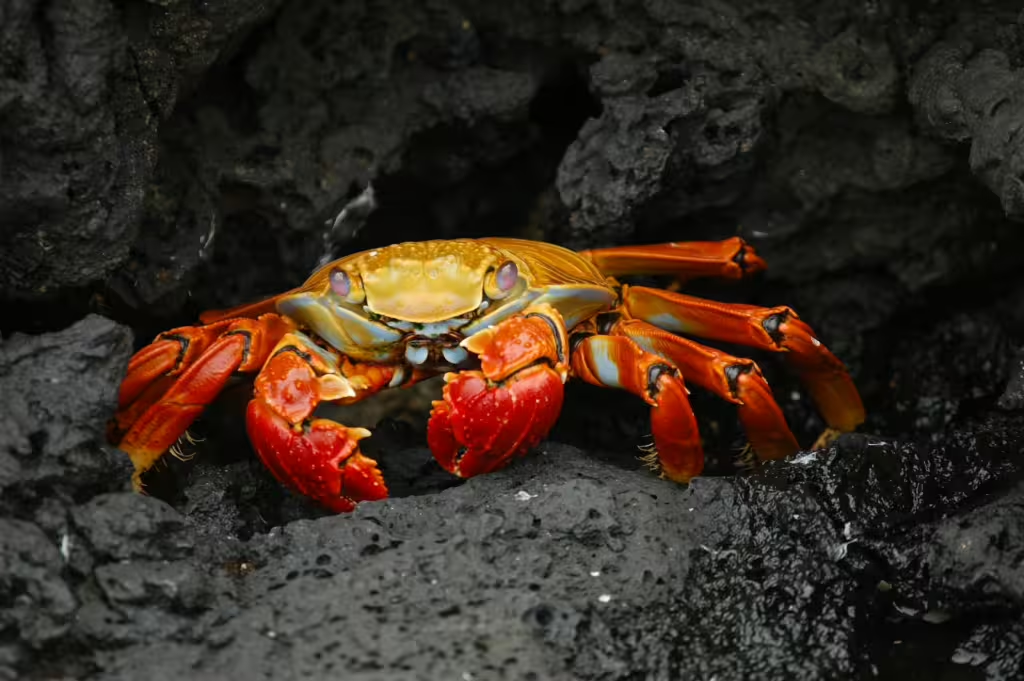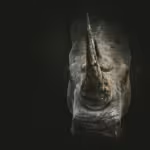Crustaceans are…not exactly the most charming group of aquatic creatures on the planet. Yet though they may not be especially cuddly, they have captivated scientists, nature enthusiasts, and seafood connoisseurs for centuries. That’s correct, delicious though they might well be, it is the diversity, resilience, and evolutionary peculiarities of these ocean insects that is truly fascinating, more fascinating than the casual reader would probably expect.
Comprising familiar species like crabs, lobsters, shrimp, and krill, crustaceans are an essential component of nearly all marine ecosystems. These creatures often form the beginning and the end of the food chain, keeping everything between in a delicate balance. However, it is precisely because of their position within the planetary food web, that these incredible organisms face such dire consequences. Whether because of overfishing, climate change, and rampant ocean acidification, crustaceans are in danger. These and other human activities pose serious risks to their survival and the survival of the broader marine environment.
In this article, we will take a deep dive into the fascinating world of crustaceans. While we’re down there, we will explore the vital roles these critters play in marine ecosystems, while simultaneously highlighting the dangers and challenges they face in today’s ever-changing ocean environment. Finally, we will examine the phenomenon known as “carcinization,” a process that not everyone will be familiar with, but that shows why we might have more in common with crustaceans than we realize.
The Diversity and Beauty of Crustaceans
Crustaceans are a class of arthropods that include over 70,000 described species. These multitudinous organisms range from from tiny copepods to massive king crabs, and come in all shapes and sizes in between. Though many crustaceans have their own distinct adaptations, such as the mantis shrimp‘s super-sonic punch or the coconut crab‘s ability to breathe on land but not in water, most crusties have a few defining characteristics: a hard exoskeleton, jointed limbs, and segmented bodies. Their myriad adaptations have allowed them to colonize nearly every aquatic habitat, from shallow coastal waters to the dark, frigid depths of the ocean floor.
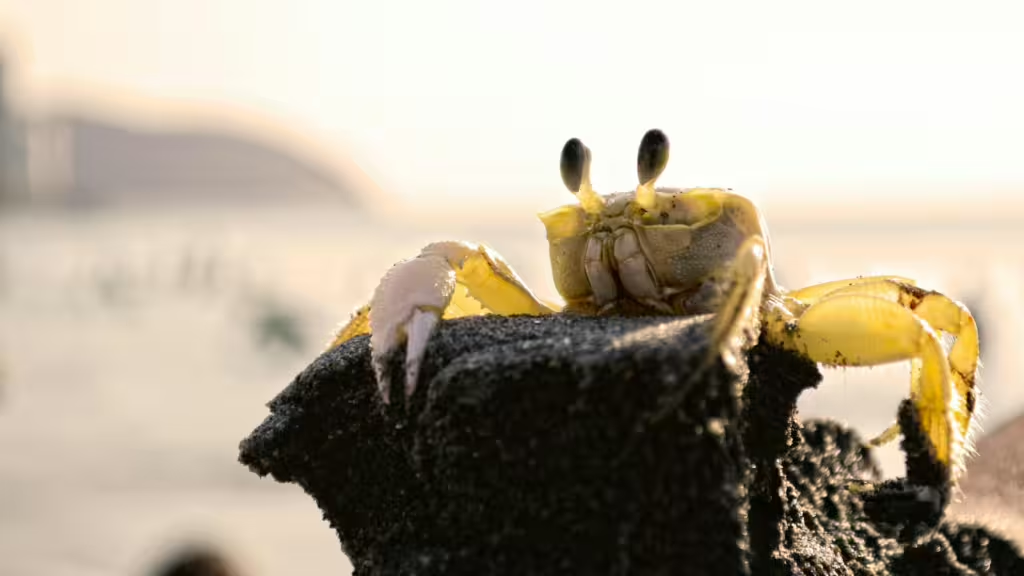
Adaptations That Inspire Awe
Exoskeleton Armor: Their tough, chitin-based exoskeletons of crustaceans provide protection from all manner of predators. The shell also supports muscle attachment, which allows the crustacean to move. Some species, like lobsters and crabs, periodically molt their shells to grow, a process that requires precise timing and a great deal of energy. Crustaceans are at their most vulnerable after a molt, because it takes time for their suddenly soft exoskeletons to harden back up.
Incredible Vision: Like their cousins, the insects, many crustaceans have complex compound eyes, which actually gives them excellent vision in low-light conditions. The aforementioned mantis shrimp, itself an amazing creature capable of superhuman speed, boasts some of the most advanced eyes in the animal kingdom. These eyes allow the mantis shrimp to detect polarized light, letting it see a much broader spectrum of colors than humans. This could explain the clownlike coloring of the fast-jabbin arthropod, but that could also be a matter of taste on the part of the shrimp.
Behavioral Marvels: Crustaceans have been known to display fascinating behaviors, such as the intricate social interactions and resourceful tool use. These actions have been observed in both shrimp and crabs respectively, but many other crustaceans have also evinced unbelievable behaviors. Hermit crabs are one that many readers will be familiar with. These tenacious little movers can famously upgrade their shells as they grow, finding new and better homes to fit their upgraded lifestyle. Meanwhile, the decorator crab is more into fashion than interior decorating. This crab likes to camouflage itself with bits of algae and debris so it can better blend into its environment.
Why Everything Evolves Into a Crab: The Phenomenon of Carcinization
We could continue this article by talking about the problems crustaceans face or the amazing ways they help their ecosystems, but that’s not what you’re here for; you’re here to find out why people keep saying everything is evolving into crabs all of a sudden. Insane as it may sound, one of the most intriguing aspects of crustacean evolution has to do with the process known as carcinization. This term is used to describe the tendency of diverse crustacean lineages to evolve into crab-like forms. This process, first identified in the 19th century, is particularly insightful because it highlights how evolution can favor certain body plans, usually due to the adaptability and efficiency those plans offer the organism.
What Is Carcinization?
Carcinization is an evolutionary phenomenon. It was first observed back in the 19th century but the term itself was only coined into the vernacular in 1916, by zoologist L.A. Borradaile. He humorously described it as “one of the many attempts of Nature to evolve a crab.” Since that time, however, this off-hand remark has been studied in evolutionary biology as a prime example of convergent evolution. In this concept, unrelated organisms develop similar traits to adapt to comparable environmental pressures. The thing is, it has occurred independently many times over the ages, in multiple crustacean lineages.
True crabs, which belong to the infraorder Brachyura, are obviously the most well-known example of carcinization, but other crab-like groups, such as king crabs (Lithodidae), have also undergone this transformation at times. Most people don’t know this, but king crabs are only distantly related to true crabs, but have independently evolved similar physical characteristics, resulting in what is referred to as a “crab-like” body plan. This pattern has recurred at different stages in crustacean over the years, demonstrating how nature often converges on certain optimal designs.
Why Does Carcinization Happen?
The repeated evolution of crab-like forms can be attributed to several functional and ecological advantages provided by the so-called, crab body plan. To help you understand. better, we have listed a few key factors below that explain why carcinization occurs so frequently in crustaceans:
Compact Body Shape:
The compact and flattened body of the crab is one of its most distinctive features. This morphology offers crab’s several benefits, particularly in environments where both maneuverability and protection are critical aspects of survival. A flattened body enables these animals to navigate narrow crevices and hide in tight spaces, helping them more easily evade predators. In addition, the compact structure reduces the crab’s overall vulnerability to physical damage, making it easier to defend against attacks.
Strong Claws:
When we think of crabs, the first thing we think about is the pinchers. This is a valuable survival took, since its the pinchers that cause the most damage to curious crabseekers. These powerful pincers also tend to be highly versatile tools, which crabs use to perform a wide range of activities, including foraging for food, defending themselves against predators, and manipulating objects in their environment. The multifunctional nature of crab claws clearly provides the animals with a significant evolutionary advantage, enabling crab-like organisms to thrive in a diverse range of habitats.
Adaptability to Various Environments:
Crab-like forms tend to be highly adaptable, occupying a wide range of habitats from intertidal zones to perilous, deep-sea ecosystems. This adaptability is partly due to their robust exoskeletons, which provide protection, or it could lie in their uncanny ability to exploit various food sources. Whether scavenging, hunting, or grazing on algae, crabs are quite flexible when it comes to noshing. That’s why most experts agree that it is this highly-customizable appetite that has allowed them to succeed in so many different ecological niches.
A Case of Convergent Evolution
We touched earlier on the fact that carcinization represents and example of convergent evolution, where unrelated species evolve similar traits in response to comparable environmental pressures. This phenomenon highlights how natural selection works. It has happened over and over again on this planet; nature repeatedly shapes organisms in ways that are both creative and pragmatic. Now, we don’t yet know what the exact mechanisms driving carcinization are, but the concept is still being studied. Either way, it’s clear that the crab-like form represents an evolutionary “success story” that it seems to want to repeat time and time again.
The Ecological Importance of Crustaceans
We now understand how crustacean evolution works, but why are they so important? The truth is, crustaceans actually play the role of keystone species in many marine ecosystems. Nevertheless, their diverse roles span the entire food web, making their health and abundance absolutely critical to oceanic balance.
Primary Roles in Ecosystems
Nutrient Cycling: Many crustaceans are detritivores, animals that consume decomposing organic material. Scavengers are always an essential part of their environment because their act of eating helps to recycle nutrients back into the ecosystem. Amphipods and isopods, for instance, play vital roles in breaking down plant and animal matter under the ocean.
Food for Predators: Anyone who has ever enjoyed a steamed crab, shrimp, or lobster, knows how delicious a crustacean can be…when you add some drawn butter, anyway. We joke, of course, but many species of crustaceans form a significant part of the diet for many marine animals. Fsh, seabirds, and marine mammals all love a bit of crustacean now and again. Some animals, like whales, seals, and penguins, eat very specific crustaceans, krill, which form the cornerstone of Arctic and Antarctic food webs.
Algae Control: Some crustaceans, like certain shrimp and crabs, really like to dig in on algae. This rampant grazing helps to maintain the health of coral reefs and prevent the detrimental effects of algal overgrowth.
Commercial Importance: As any fishmonger can tell you, crustaceans like shrimp, lobster, and crabs are economically significant to human beings. These animals don’t just support their ecological niches, their very existence supports fisheries and aquaculture industries worldwide.
The Double-Edged Sword of Human Activity
Since the dawn of time, crustaceans have remained strong, adaptable, and largely the same. They found their niche and they kept to it. This allowed them to thrived for millions of years, that is, until the presence of humanity. Our very emergence as an intelligent creature put the crustaceans at risk and today, human activity continues to threaten their existence more and more with each passing year. Overfishing and ocean acidification are among the most pressing challenges they face, but climate change has also put significant strain on crustacean populations, because it changed ocean temperatures and weather patterns.
Overfishing
The global demand for seafood has led to unsustainable fishing and harvesting practices that deplete crustacean populations. The most popular seafood species, animals like shrimp, lobster, snow crab, and king crab are often caught at unsustainable rates, leaving insufficient time for their native populations to recover.
Bycatch Issues: Non-target species are frequently caught alongside crustaceans. The removal of valuable local species further disrupts ecosystems and damages marine life.
Illegal Fishing: Crustacean fishing is highly-regulated because most in the industry are well aware of the steep decline in shellfish populations, but that doesn’t stop criminals from doing dirty deeds. Poaching and unregulated fishing continues to occur, exacerbating the problem and making things worse for those who are just trying to make a living or feed their families. These crimes typically occur most often in remote or poorly monitored regions.
Ocean Acidification
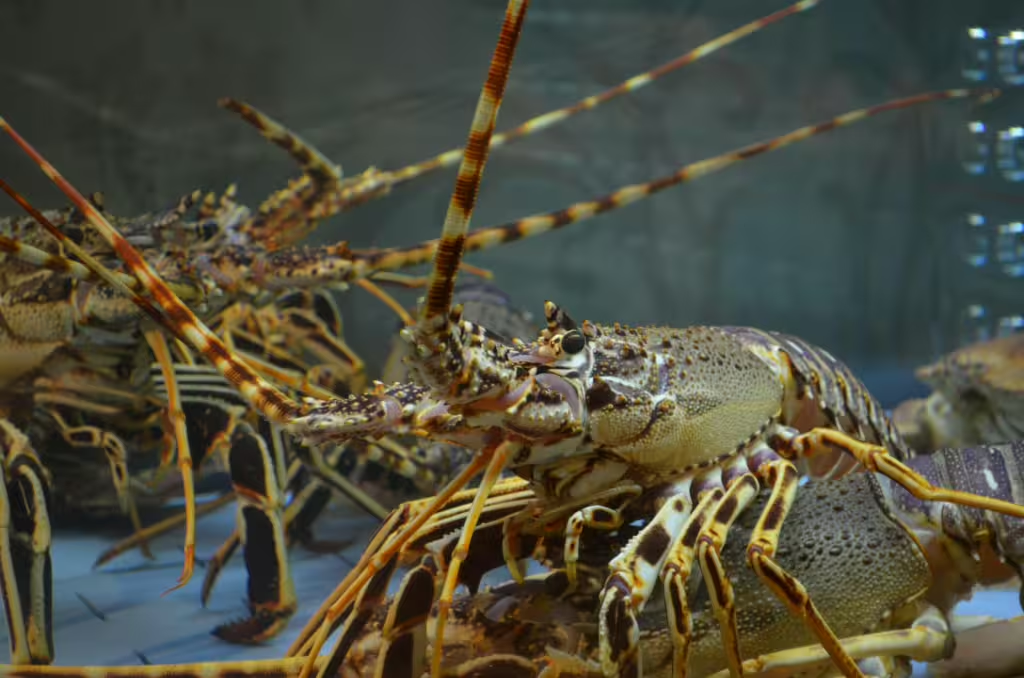
Ocean acidification is a dangerous condition that has come about because of an excess of CO2 in out atmosphere. We have a good deal of CO2 in our atmosphere at the moment, incidentally, thanks to the unchecked amount of carbon our species is belching into the sky. As seawater absorbs this extra CO2, it becomes more acidic, reducing the availability of calcium carbonate—a critical component of crustacean exoskeletons.
Weaker Shells: The increasingly acidic conditions within our ocean waters have made it harder for crustaceans to form and maintain their shells, leaving them more vulnerable to predators and environmental stressors. Remember how we mentioned a crustacean is vulnerable when they molt their shell into something softer and weaker? Imagine that…but all the time.
Disrupted Development: Because of their tiny size, larval crustaceans are particularly susceptible to acidification. Acidic waters can impair growth, stymie survival rates, and slow reproduction to a crawl.
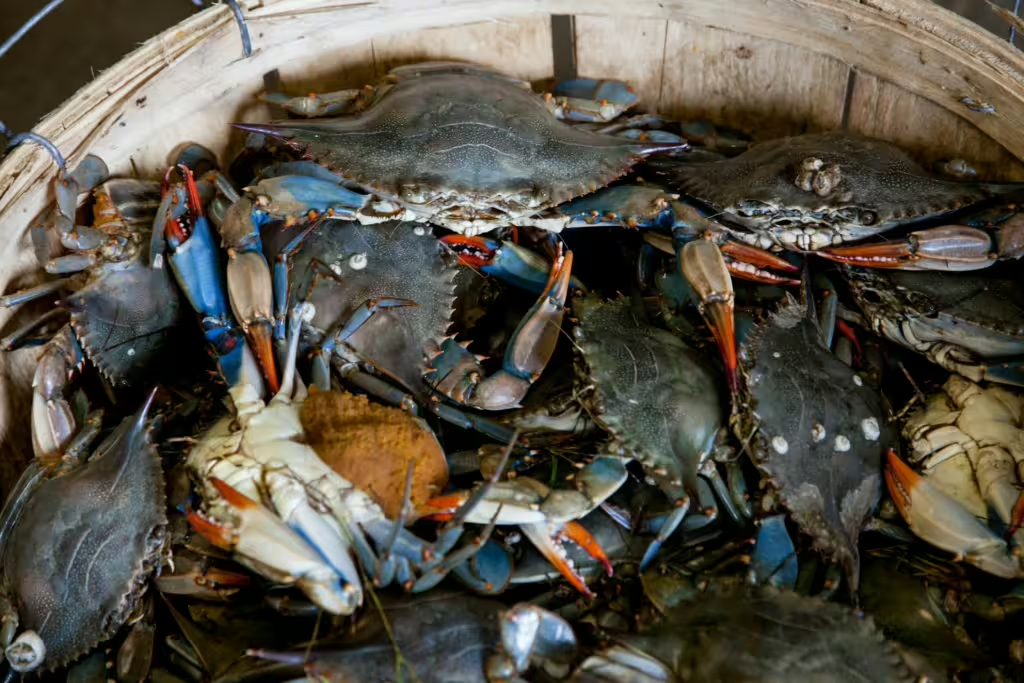
True Investigator Says…
As you can see, while crustaceans may be among the most fascinating and ecologically important creatures in the entire ocean, they are no less endangered by humanity than every other fish in the sea. Nevertheless, the remarkable adaptations and evolutionary trends that have led to the crustacean’s rise to fame have also made them indispensable in their marine ecosystems. As of the writing of this article, many species of commonly overfished crustacean face significant challenges from human activity, particularly due to unsustainable harvesting, climate change, and ocean acidification.
That said, we can help the crusties by simply taking steps to address these threats. By practicing sustainable fishing, lowering emissions, and protecting our waters from pollution, we can ensure that crustaceans continue to enrich our oceans and support life on Earth for generations to come.
Discover more from TrueInvestigator
Subscribe to get the latest posts sent to your email.
